
|
 |

|
 |
MATHURI, KOYA AND LAMBADI DANCES OF ANDHRA Apr 2001 Based in Secunderabad, P Narasing Rao and his Nrityanjali Academy which specializes in contemporary and ethnic folk dances of Andhra Pradesh, have developed many street dramas and other media to educate the slum dwellers about the social problems. Nrityanjali Academy made a humble beginning in 1984 with a small team to preserve the traditional folk art forms of Andhra Pradesh state. Today they are proud of the growth it has achieved in different areas of specialization and its size. Nrityanjali presently has highly motivated exclusive, specialist groups in Community Development, Event Management, Community Folk Theatre and Folk Dance. Here are some photos and information on some of the traditional folk art forms and folk theatre of Andhra Pradesh state in India. MATHURI 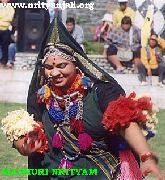
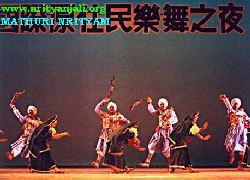
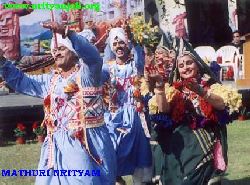
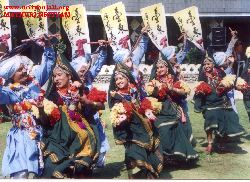
Performers : Males and females. Duration : Approximately 12 minutes. This folk dance is generally performed by the backward classes of the UMJI and INDRAVELI forest areas of UTNOOR TALUK of ADILABAD DISTRICT of ANDRHA PRADESH. They dance for hours together on the occasion of Krishna Astami in Sravana Maasam. This dance is performed by women and men separately and together. There are many occasions wherein men and women dance together. Because of their unique hair style they are also called KOPPU LAMBADI. Women dance is very slow in tempo whereas male dance is fast and very vigorous. Male artists hold a handkerchief and a stick in their hands. The instruments which are used in this dance are called as Sutta, Tasha or Nagara, Dappu etc. K Ö Y A D A N C E 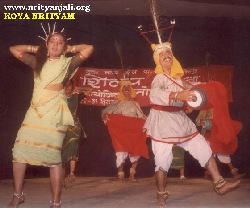 Performers: Male and female. Duration: Approximately 12 Minutes. The Koya tribes of Andra Pradesh's forests have strong affinity with Marias, tribes wearing bison-horn head dress in Bastar, of Orissa state. Their dances have the same forest tribal rites, ritual, magical significance and an identical energy. The Koyas live in remote forest hill-tops in Visakapatnam District. Their dances include Mayura Nat (Peacock dance) exclusively performed by men, Harvesting Festival dances performed in the month of April every year. The dance is done in small steps, forming complex patterns on intricate rhythmical phrases of half-beats and quarter beats. The musical and rhythmic accompaniments mainly consist of the Pioodi and Mayunga. Pioodi is a flute of three feet bamboo stick with five holes on the end. L Å M B A D I 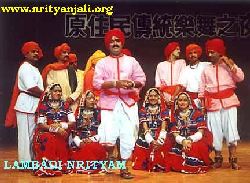
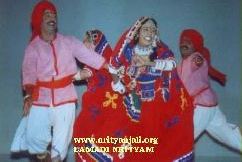
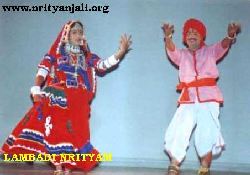
Performers: Females mostly, though even males participate in this dance. Duration: Approximately 12 minutes. LAMBADIS are tribals who are also known as Sengalis and Banjaras. The women wear a very colourful Rajasthani style dress and lots of jewellery. The clothes they wear are decorated with pieces of mirror and cowrl. They wear ivory bangles and ornaments which are innumerable. The dance performed by Lambadis is not vigorous, but when they dance to the beat of the drums, it gains momentum. The language in which the songs are sung is derived from their own Lambadi dialect. They have very meaningful folk songs set to sensuous tunes. Generally male artists give support of orchestra with Dappu and they also dance with female artists while giving the support of rhythm to the Dance. Credit: P Narsing Rao |